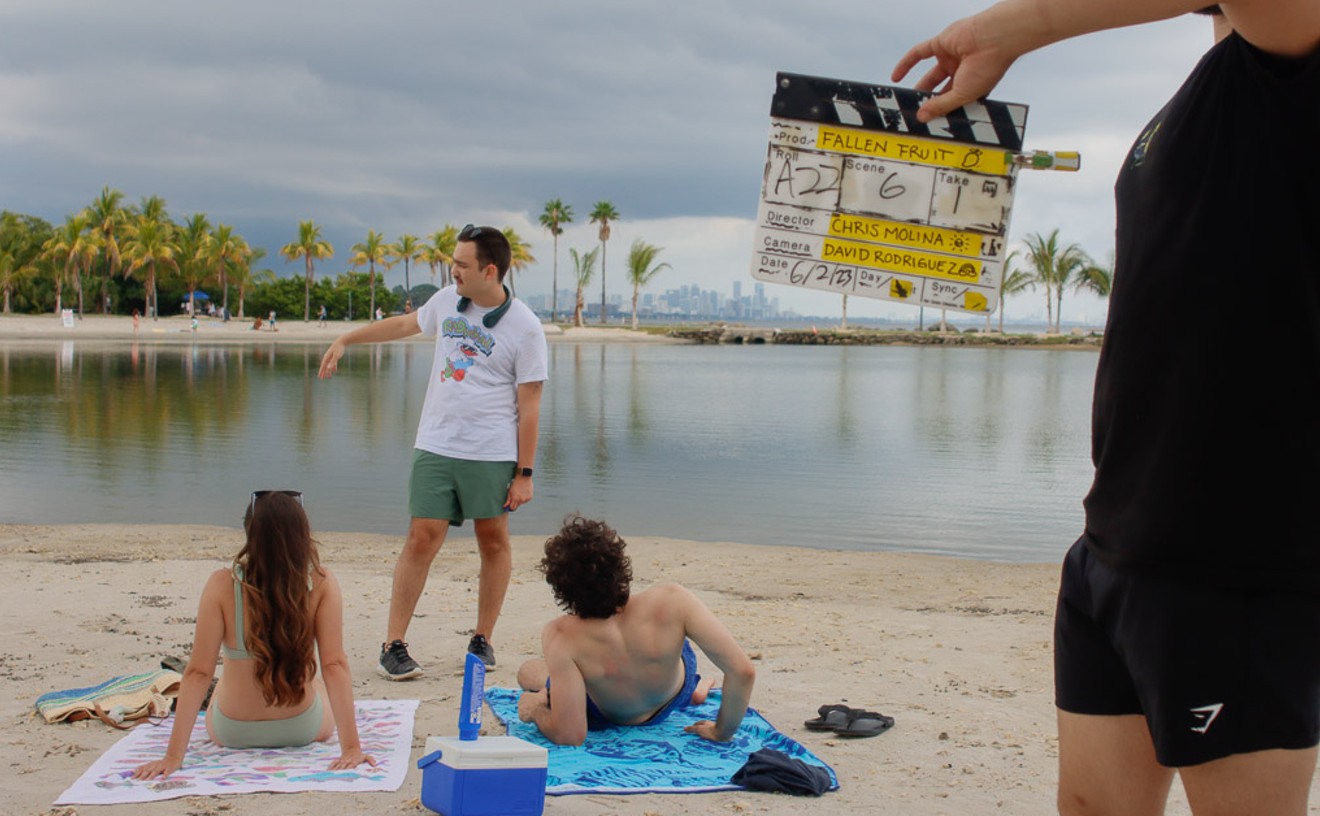Suddenly, the Miami summer receded and for a moment I was back, walking the shadowy streets of the Lower East Side in the days before the rents went nuts. We were infinitely younger then, and the World Trade Center towers were just big old buildings where you went to get high on the observation deck when storm clouds came rolling in.
In those days the Lower East Side was a real neighborhood. The Talking Heads and Patti Smith had eased the Hell's Angels out of CBGB's, and the Angels themselves seemed more intent on raising kids than hell at their headquarters on Third Street. Keith Haring was alive and splattering paint everywhere. Allen Ginsberg was alive, and toting his own groceries. A real mob hit man and his mom ran my favorite corner bar. A local plumber was a percussionist for Tom Waits. Mikey Piñero hadn't OD'ed yet, and lived on Sixth and B ...
Madonna was around and Shawn Colvin was waiting tables. And Tim Sanders -- as we knew him -- was a familiar sight, walking the streets, smiling and often shopping with his family at the new Korean produce market that opened just a door away from our friendly neighborhood methadone clinic.
Tim was like most of the art-crowd folks then -- consistently courteous, happy to say hello and chat, but Busy. We were all busy. Many of us who adopted New York personas shortly after arriving in the city from all hell-and-gone were striving to be artists, fashion designers, musicians, actors, writers -- all for art, baby. Some of us were consumed by the demands of working careers, and some were juggling three stupid day gigs, but mostly we all got along and minded our own business.
But from the day when Tim bought the old East Village rectory of the German Roman Catholic Church of Saint Nicholas on Second and A, and moved in, there was a steady undercurrent of gossip about him. And about his huge antique eleven-by-fourteen Fulmer and Schwing view camera. Even by New York standards, Tim's intent to use a camera that old, that big, and that clumsy was an artistic statement all by itself. It was bigger than the equipment even Art photographers thought of as sensible -- a real dinosaur, dwarfing the 8x10 cameras that Ansel Adams, Edward Weston, and Walker Evans had often used. Everybody seemed to know Tim was a success even before he arrived from California, but the real buzz about him centered on the celebrity sightings happening regularly near his front door. We all had stories about the time Larry Rivers or Julian Schnabel showed up, and "I saw John Huston getting out of a cab," and how "I swear Quentin Crisp and Erte and Betty Friedan were all there," and "Didja see Aaron Copland?" ... on and on. But it was, after all, New York, and we were way too hip to actually ask Tim much. Still we were smugly happy. Such famous foot traffic was good for everybody.
Early on, Tim had absorbed the first rule taught in photography school: "If you want to become a famous photographer, take pictures of famous people." It's a rule that sounds a whole lot easier than it is, and even if a photographer figures out how to get private audiences with hundreds of famous characters, most careers built on the "famous people" rule degenerate into sycophantic and transient pop culture magazine styles, or worse, brain-dead paparazzo shots. Tim avoided these dreary extremes by building his substantial body of work on solid photographic principles, while paying attention to the methods of his historical predecessors. He believed in the lasting value of the straight, well-crafted photographic portrait and managed to tip his hat without borrowing too much from the work of the giants in the field, like August Sander and Irving Penn. In choosing to work with huge negatives (and later huge Polaroids), Tim locked himself into adopting shooting habits similar to the formal posing practices that were standard in portrait studios of the early Twentieth Century: Subjects stood deliberately in front of the camera, made conscious decisions in partnership with the photographer about their pose, and a single sheet of film was exposed. Forget about making snapshots with this gear.
I visited Tim's shooting space in the early Eighties, and it was surprisingly small. Modern photographic gizmos were absent. Only a modest skylight provided light for shooting or seeing, and the room was gloomy. A single framed print of one of Tim's rich portraits of Orson Welles hung on a wall. His huge and awkward antique camera sat on its studio stand, which was not a tripod but a wooden, two-legged industrial contraption with lots of iron gears that rolled on casters. Buried in corner shadows was a lonely-looking single studio tungsten lamp that could be used when no daylight was available. In an adjacent small closet, his darkroom was primitive: a few trays for processing sheet film and paper, a little flat space for a contact print frame, and that's pretty much all -- no enlarger in sight. This place had nothing in common with the rah-rah commercial photography scene going on just a few blocks away in the expansive lofts of SoHo. There were no grand dressing rooms, no caterers -- just a little space with a big camera.
But an impressive contingent of the rich and famous kept traipsing in to sit for his long exposures, especially New York artists, and they kept coming even after he added the large-format 20x24 Polaroid camera and an occasional strobe to his bag of tricks.
Grain-sniffing photographic purists and photographic consumers who have grown fond of the easy and tired perfection of modern studio lighting techniques have been known to grouse that the tonalities in Tim's prints vary in consistency, and that's true enough. While some of his black-and-white images are textbook examples of perfect prints, with every pore and detail resting neatly on the long curve of the gray scale (resulting in the kind of photographic clarity that can only be attained by contact prints made from huge negatives), others contain patches of pale skin and faded sweaters that are overexposed and paper-white -- like uneven antique photographs.
In photography's early days, a sitting often consisted of a single exposure made onto a hand-coated glass plate in constantly shifting available light. In those days exposure length was determined by intuition and experience rather than a light meter, and those old exposures were guesstimates that had a human hand on the trigger. Tim's portraits contain similar irregularities and strengths. While this makes for interesting shoptalk, it's really a nonissue. His body of work is about a bigger picture.
Tim's portraits of artists, musicians, actors, and other movers and shakers of the last half of the Twentieth Century allow us to look directly into the eyes of many of the people who defined American culture in those years. Plenty of those famous faces spent time in, or had strong connections to, the Lower East Side, so in some ways Tim's early collection is a portrait of the neighborhood. Staring into those faces makes it easier to remember what we liked and disliked about those years.
And in shooting celebrities, Tim has become one, at least to the art crowd, and to every high-end art director whose budget is big enough to afford his services. It's a great bunch of shots, and the show is worth an hour of almost anyone's time, even if you didn't live on the block.










